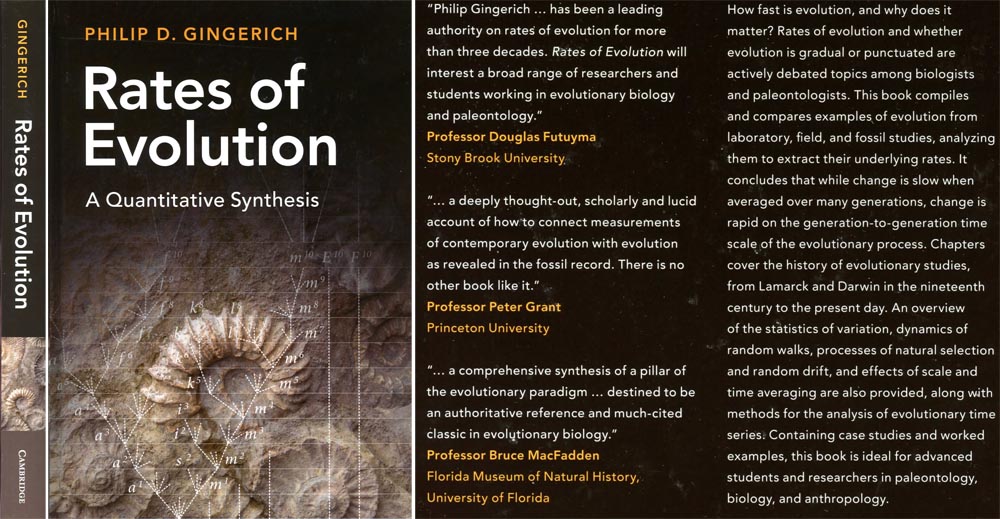|
|
PHILIP D. GINGERICH
A.B.: Princeton University 1968
M.Phil.: Yale University 1972
Ph.D.: Yale University 1974
|
 |
Office:
1222 Research Museum Center. 3600 Varsity Drive, Ann Arbor
Mail: Museum of Paleontology, Research Museum Center. 3600 Varsity Drive, Ann Arbor MI 48108-2228
Tel.: 734-764-0489 Fax: 734-936-1380
E-mail: gingeric@umich.edu

Mammals have an unusually dense and continuous fossil record, and are thus
ideal for evolutionary studies. I am interested in understanding how evolution
as a process acting on generation-to-generation scales of time yields the microevolutionary
and macroevolutionary patterns we observe on longer historical and geological
scales of time. Study of the evolutionary process
and comparison of resulting patterns requires quantification of evolutionary change and comparison in terms
of rate.
Field work with students in Wyoming is focused on bed-by-bed
collecting of Paleocene and early Eocene vertebrates to provide detailed
species-level evolutionary time series for quantification of evolutionary
rates, and, simultaneously, a high-resolution stratigraphic record of
the appearance of modern orders of mammals at the Paleocene-Eocene boundary
(Perissodactyla, Primates, etc.). Our work has shown the appearance of several important
modern orders to be synchronous and to coincide with an abrupt dwarfing event in mammals. In recent years we have been able to link the first appearances and dwarfing to a brief but important worldwide shift of carbon
and oxygen isotopes and a rapid but short-lived event of global climate
warming— the Paleocene-Eocene Thermal Maximum or PETM. In this instance, profound long-term higher-taxonomic faunal
change resulted from a transient environmental perturbation affecting
species over a broad geographic area.
Search for the origin of modern orders of mammals led
to field work in the Paleocene and Eocene of South Asia, starting in the
1970s, which has yielded important new land-mammal faunas in Pakistan.
Early whales (e.g., Pakicetus) were discovered there unexpectedly,
which has diverted attention to middle and upper Eocene marine strata
in Pakistan, Jordan, Egypt, and Tunisia. Field work in these Tethyan sediments
has yielded important intermediate forms documenting the origin and early
evolution of whales.
I remain interested in the origin of primates, the Eocene evolution of primates, and the origin of higher primates or Anthropoidea.
Site updated
5/27/19
: Comment?

